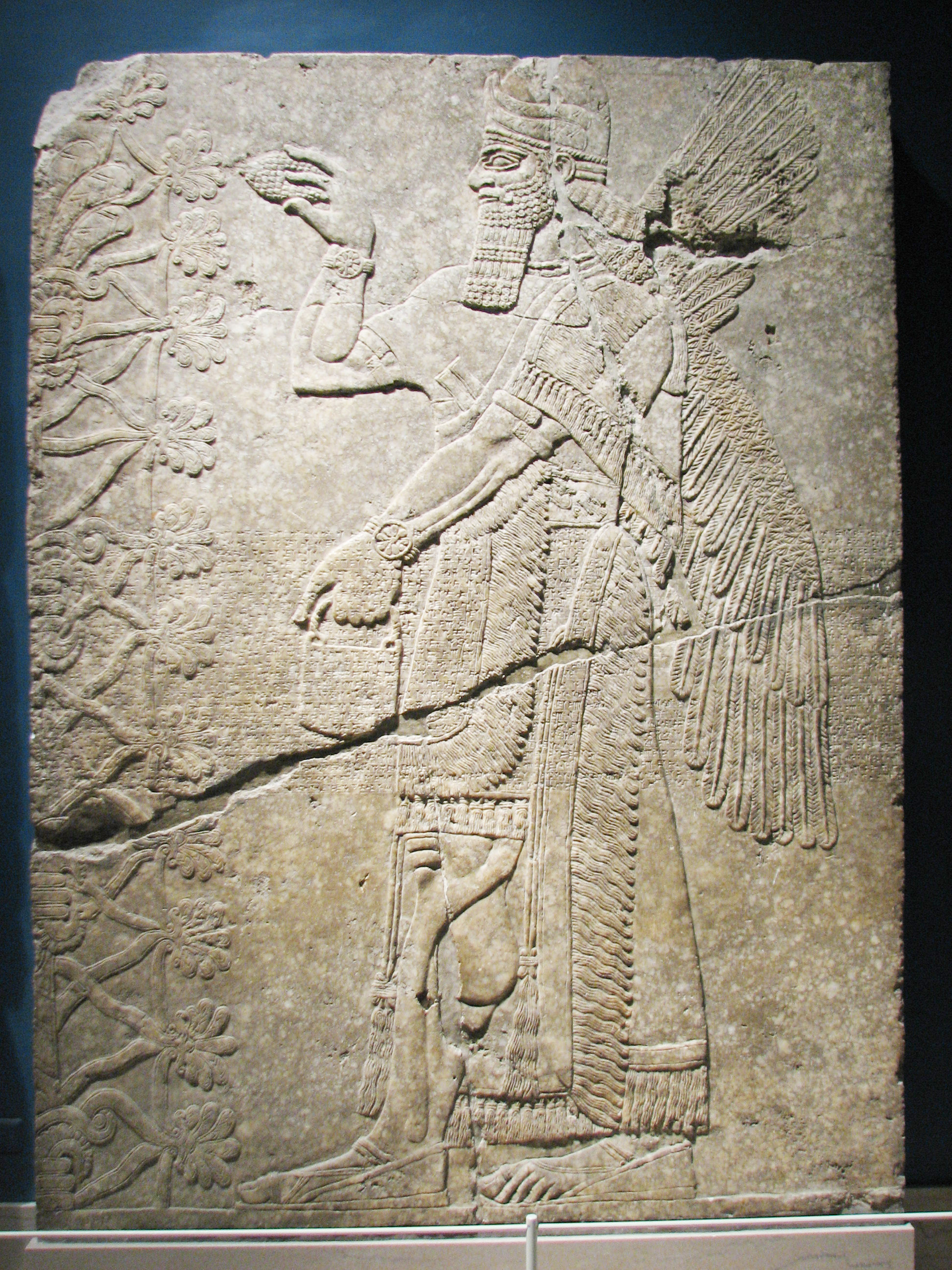(From info card at Art Institute of Chicago, giving an idea of how this panel would look with the others:)

From info card at Brooklyn Museum
"The twelve massive carved alabaster panels that line the walls of this gallery are but a small sample of the hundreds of such reliefs, all originally brightly painted, that once adorned the vast palace of Ashur-nasir-pal II, one of the greatest kings of ancient Assyria. Completed in 879 B.C at the site of Kalhu (modern Nimrud) in what is now Iraq, slightly north of Baghdad, the palace was the heart of a vast empire.
"Like modern billboards trumpeting the virtues of some authoritarian ruler, the reliefs in Ashur-nasir-pal II's palace served a propagandistic purpose, proclaiming the king's legitimacy. Because most people in the ancient Near East understood the administration of the state as a collaborative effort between the king and the gods, many of the reliefs show the ruler and his supernatural attendants celebrating religious rituals. The most common depict the ruler and his winged protectors (genies) tending a sacred tree, an ancient symbol associated with the divine power to bestow life. Other reliefs from the palace show Ashur-nasir-pal II engaged in such princely pursuits as warfare, hunting, or celebrating his victoires at elaborate banquets."
From info card
"The winged genies on the reliefs in this gallery exhibit two distinct body types and two different styles of dress. The figure in this relief has a long,
lean body and wears a garment with a long vertical fringe folded back; genies in other reliefs are of shorter, stockier build and wear a garment with a
fringe that lies flat. These differences may indicate that at least two master artists were responsible for designing the reliefs in Ashur-nasir-pal IIís
palace."
|



